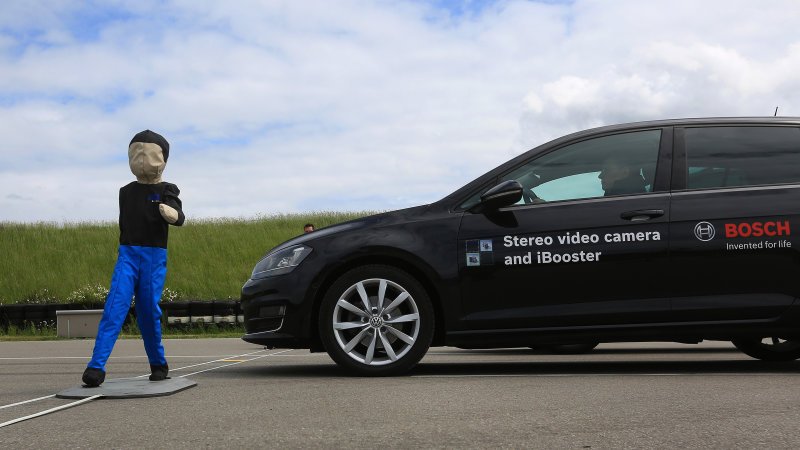Ten Automakers Agree to Make Automatic Braking a Standard Feature

Ten major automakers pledged Friday they would soon make crash-prevention technologies like automatic emergency braking available on all new vehicles built. Details are still being ironed out, and a timeline will be established in the months ahead. In a written release, the Department of Transportation said the agreement will be implemented "as soon as possible." The ten automakers are Audi, BMW, Ford, General Motors, Mazda, Mercedes-Benz, Tesla, Toyota, Volkswagen, and Volvo.
Evidence has mounted that demonstrates these crash-prevention systems can make a major difference in preventing or mitigating the severity of accidents, and the federal government has spent the past few months urging automakers to spread safety features throughout their vehicle lineups. Federal officials have pointedly said they should be available for all drivers, not only the ones who can afford them.
"Safety isn't a competitive advantage," said National Highway Traffic Safety Administration chief Mark Rosekind, speaking earlier this summer. "You never see the star rating on the side of an airliner when you board. ... Our responsibility is to ensure these innovations achieve their life-saving potential. That means making sure innovations are focused squarely on safety and widely distributed."
Until Friday, auto manufacturers may have disagreed on whether safety packages made for competitive advantages. But ten agreed to make automatic braking standard on all new vehicles, and those ten represented 57 percent of light-duty vehicle sales in the US market in 2014. The DOT said Friday's agreement represented a "historic commitment."
Many automakers were already beginning to include such crash-prevention technology on many models, as the Insurance Institute for Highway Safety had recently made it a criteria necessary to earn the organization's influential top safety ratings. Federal officials made an announcement about Friday's agreement in Ruckersville, VA, at the IIHS facility, which recently expanded to include more testing grounds for these technologies, which are considered the building blocks toward an automated future.
Automatic emergency braking includes a range of systems that address a variety of crash scenarios, especially rear-end crashes, in which drivers either don't apply brakes or apply insufficient braking power. Through a variety of on-board sensors and cameras, the safety systems warn the driver of an imminent crash, and if the driver fails to respond, they automatically engage the brakes.
"This technology can compensate for the mistakes every driver makes, because the systems are always on alert, monitoring the road ahead and never getting tired or distracted," said IIHS president Adrian Lund.
Related News


